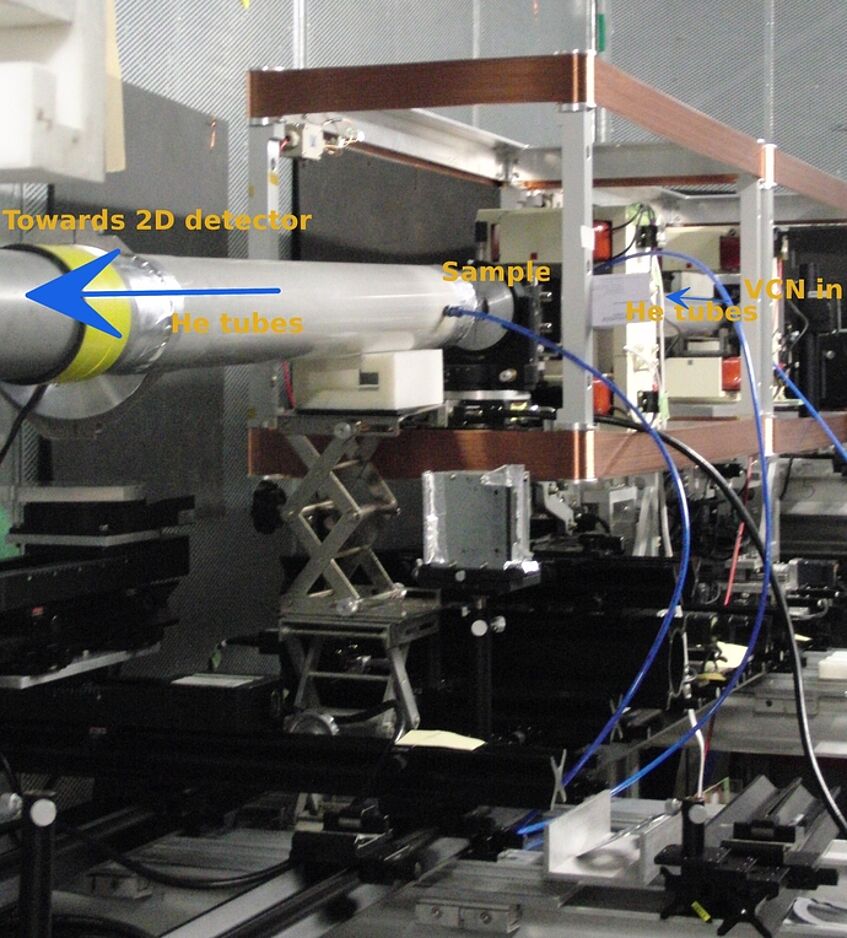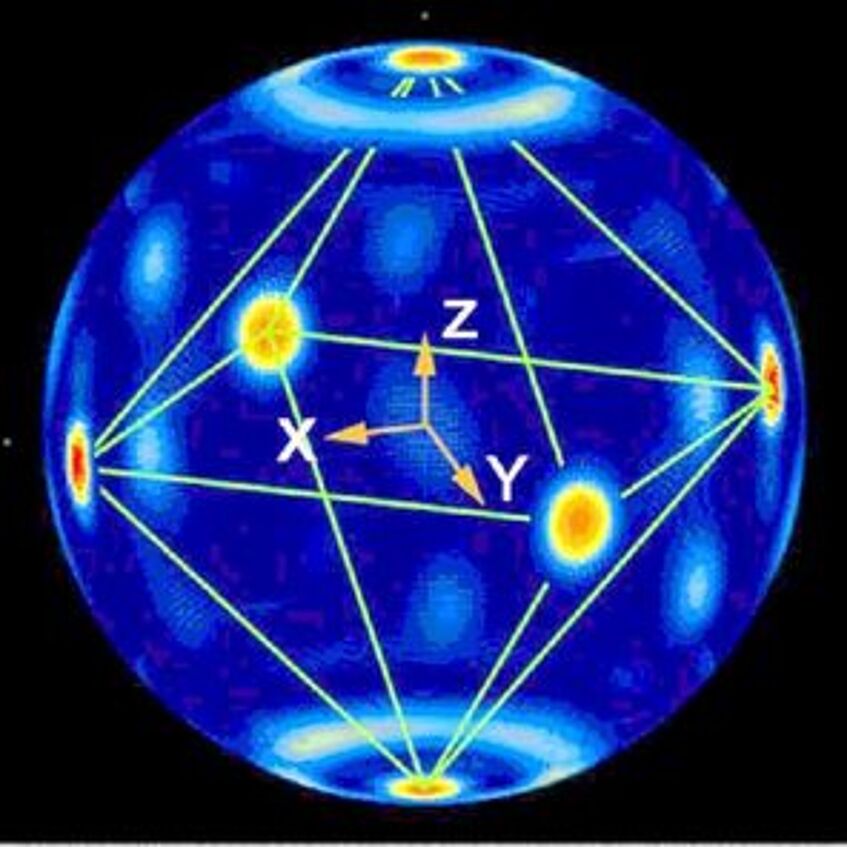Neutron Optics and Diffraction

Very cold neutron optic setup @PF2, Institut Laue-Langevin, Grenoble, France
Neutron optical experiments are based on diffractive optical elements. We prepare grating structures by various methods (e.g. light optical holography or self assembly of colloids) in soft matter and employ them for diffracting (very) cold neutrons. Gratings for these neutrons nowadays can be designed to serve as 3-port and 2-port beam-splitters, as well as a mirror. In addition three of them are assembled in a row to form a triple-Laue interferometer for cold neutrons. To implement magnetic interactions additionally we functionalize the structures via (superpara)magnetic nanoparticles.
Selected publications:
- Flauger, Peter, et al. "Light-and neutron-optical properties of holographic transmission gratings from polymer-ionic liquid composites with submicron grating spacing." Polymers 11.9 (2019): 1459.
- Blaickner, M., et al. "Monte-Carlo simulation of neutron transmission through nanocomposite materials for neutron-optics applications." Nuclear Instruments and Methods in Physics Research Section A: Accelerators, Spectrometers, Detectors and Associated Equipment 916 (2019): 154-157.
- Ličen, M., et al. "Neutron diffraction from superparamagnetic colloidal crystals." Journal of Physics and Chemistry of Solids 110 (2017): 234.
- Fally, M., et al. "Neutron optical beam splitter from holographically structured nanoparticle-polymer composites." Physical Review Letters 105.12 (2010): 123904.

Neutron holographic image of Palladium hydride.
We have a long tradition in doing elastic and inelastic neutron scattering experiments to investigate solid state matter, mainly by employing triple axis-spectrometers. On the contrast we pioneered neutron holography with picometer resolution, which is a novel technique introduced during the last decade. In order to overcome the drawback of prohibitively long measuring times the use of multidetectors for the recording of neutron holograms was explored. By using large detector arrays, simultaneous acquisition of a series of holograms with neutrons of different wavelengths is possible. Such a set-up corresponds to the method of multiple energy X-ray holography recently employed in synchroton radiation studies.
Selected publications
- Cser, László, et al. "Direct observation of local distortion of a crystal lattice with picometer accuracy using atomic resolution neutron holography." Physical review letters 97.25 (2006): 255501.
- Krexner, G., et al. "Nanocluster Formation in Electron-Irradiated Li2O Crystals Observed by Elastic Diffuse Neutron Scattering." Physical review letters 91.13 (2003): 135502.
Neutron experiments are performed at a number of beamlines in France, Germany, UK and Switzerland.
